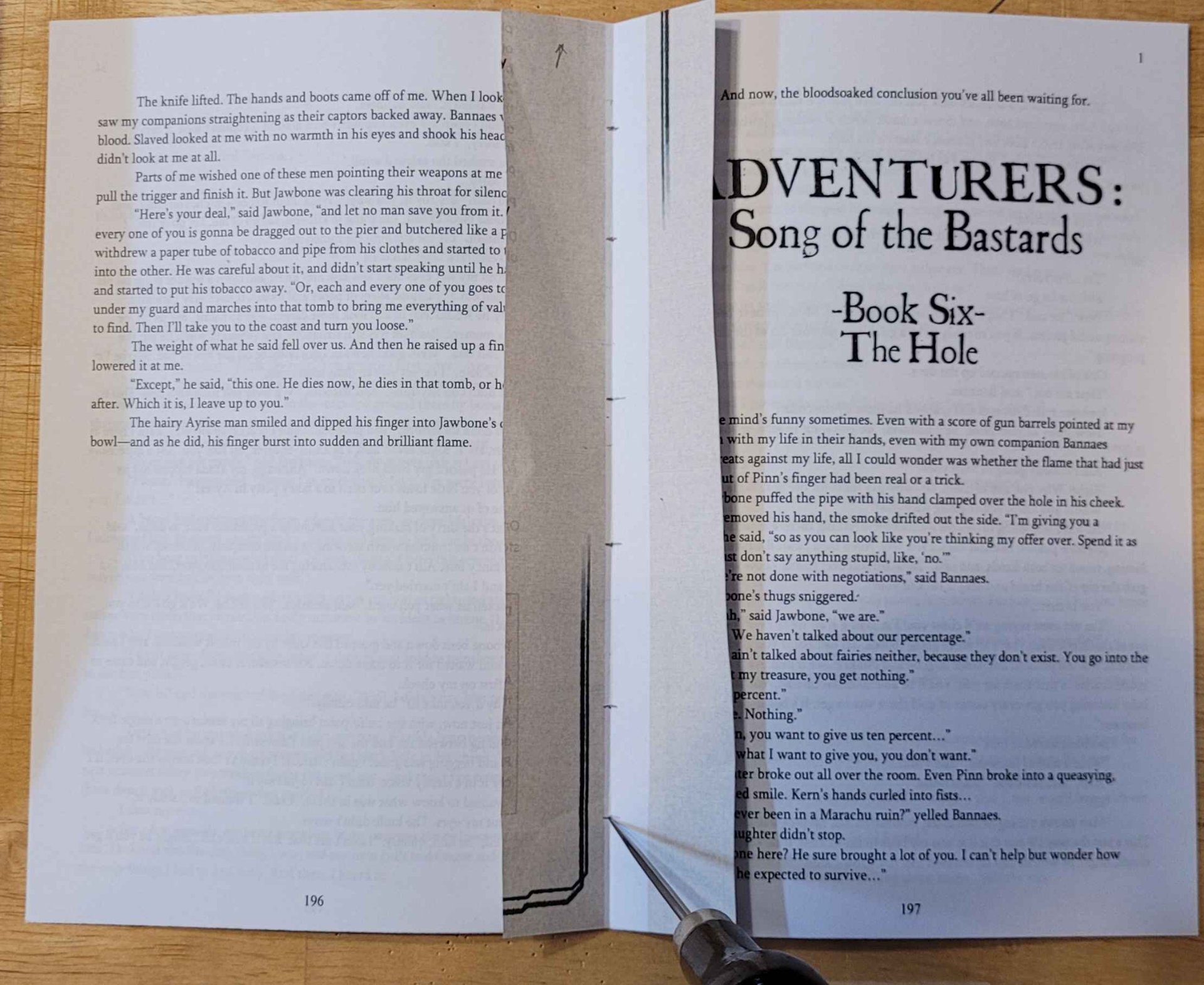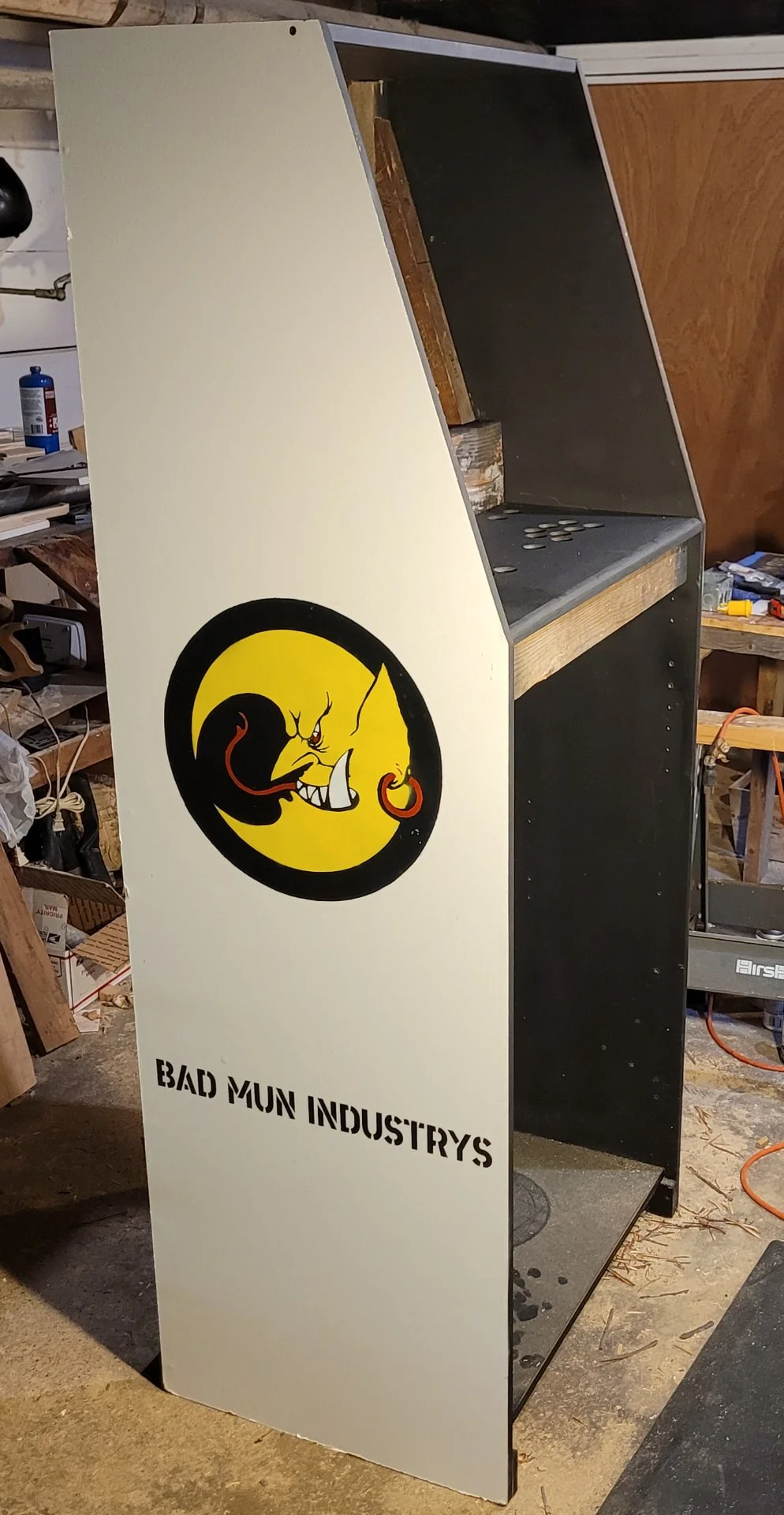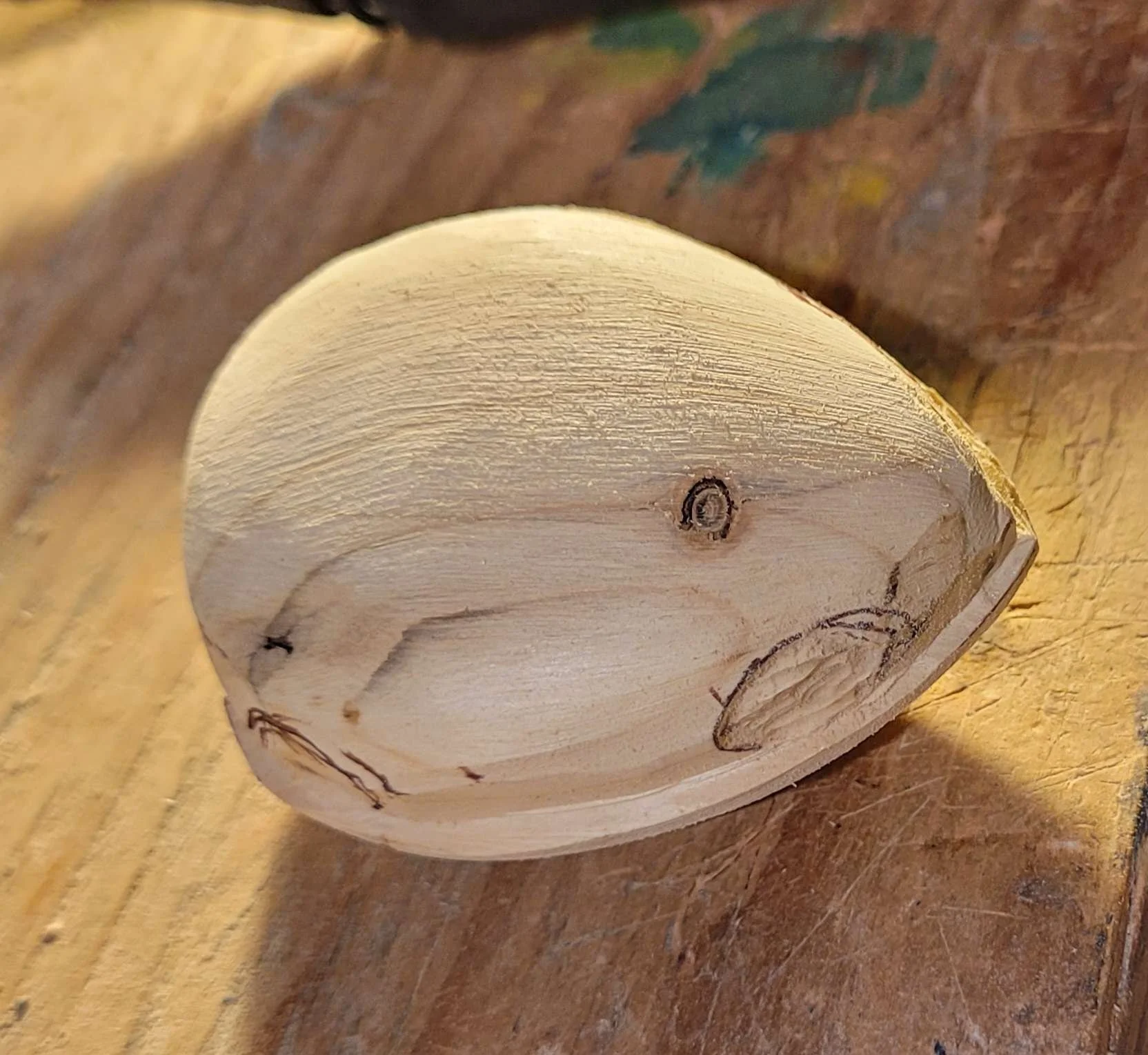I write science fiction, draw, paint, photobash, do woodworking, and dabble in 2d videogames design. Big fan of reducing waste, and of building community
https://jacobcoffinwrites.wordpress.com
@jacobcoffin@writing.exchange
- 16 Posts
- 44 Comments
Just to add, the way I pictured this working was to set up a basic smithee, probably a three sided shed so I’d have a dark place to work (helps to gauge the temp of the metal by color). I’d get some of those gas welder’s goggles with the flip up flip down lens (or use my electronic welder’s hood) so I could safely look at the work in the firepot (solarpot?) then take it inside to quickly work on it. I’d stow the forge inside the smithee (or in an attached lean-to) when not using it. One feature that might be good would be a way to cover the lens and unclip it from the forge so it can be stored in a box or wrapped up, to reduce the risks of it starting a fire.
Sure! Generally they’re just an old coffee can with a thick layer of plaster of Paris and sand or firebox cement on the inside. They cement in some torch parts so they can attach a can from a burnzomatic torch and blow fire into the small, contained space from the side while having a hole on the front (usually with some loose firebrick for a door) to insert the work.
 https://makezine.com/article/workshop/making-your-own-tin-can-forge/
https://makezine.com/article/workshop/making-your-own-tin-can-forge/https://m.youtube.com/watch?v=xv9nnEhgfuY
I don’t know that the design itself is actually applicable here, just that they’re a good demonstration that even with a small forge, you can do some pretty cool blacksmithing.
In practice I think a solar forge would have to be open from the top, and couldn’t really benefit from the tight space confining the heat, so it’d probably be closer to using a portable ferrier’s anvil like you might see reenactors use at the fair, or something like this:

Though it’d look more like that artist’s smelting rig with the big lens and all.
Thanks! I’m really excited to see what you come up with
That’s great! I don’t have specific dimensions in mind (only because I haven’t sourced a lens yet). I’m not sure about the beam width. I think no matter what, it’ll be a narrower heat than you normally get with a coal fire or propane forge, so the blacksmith would probably have to adjust beam and shift the position of the piece to distribute the heat. But people make all kinds of things using little coffee can forges so if it allows for even that scale of project it’d be very useful.
It might not be a drop-in replacement for a traditional forge, but it could be a really cool way to preserve a lot of the practice without burning coal or gas. Let me know if I can help at all!
So I’m not sure this would qualify, it may be too simple. I’d been thinking about trying to build a solar forge (I got to learn forging from a really good blacksmith who worked with coal for a couple years, though I am very much an amateur). I’ve seen videos of people using old fresnel lenses from rear projection TVs to burn through skillsaw blades and if you can melt steel, you can certainly forge it. It might just be slow, or too focused on one spot, requiring some movement to distribute the heat, something I’d have to mess with. It’d also be a bit of a safety hazard overall, but at least it’d be outside on a paved driveway instead of of inside a shed like my old coal forge.
I was picturing something similar to this smelter but with a reused TV lens, and a fire pot where his crucible is. The mechanical parts would be for rotating it to keep the sun shining through the lens, and possibly for adjusting the focus. Stability and safety would be a big consideration, don’t want the wind blowing it around too much.
Again, not sure if it’s what you’re looking for, but I’d like you to get some usable answers here. Best of luck with your project, thank you for reaching out to involve the community!

 7·2 months ago
7·2 months agoThis is really cool! It sounds like it’s operating a bit like the Grain De Sail II carrying high value cargoes (campaign and cognac) which probably offset the somewhat higher operating costs. The Grain De Sail at least was transporting French wines to the US on one leg of the journey and raw coffee and cocoa for processing in Europe on the way back (I think another article was claiming they were planning to transfer aid supplies from the US to ports south on some runs but this article doesn’t mention it).
It seems like sail ships might still be viable for some of what they were traditionally used for - luxury goods and necessities that could only be acquired elsewhere. Container ships made it profitable to ship everything and more and more I’m wondering if that’s part of the problem.
Also I love all the upgrades and improvements they’ve made to sail ship designs for safety and to reduce the number of crew they need. These things are exactly the kind of anachronisms I feel like we’d see a lot of in a solarpunk world.

 3·2 months ago
3·2 months agoI’m definitely a beginner too, especially with using actual cloth - I think I just got lucky with which fabric I happened to have on hand.
This simple beginning definitely got us thinking about more elaborate stuff to try in the future. Part of why I did a basic cloth hardcover was that the author never made any cover art for it, and partly that I just thought it would be a good fit for the feel of the story. But for some of our own I think we can do some really cool versions of their cover art in this format. Part of that would be inverting the colors and dialing in the contrast for clarity.
I’ve seen some really cool looking illustrations etched on online demonstrating the potential:


 4·2 months ago
4·2 months agoThat’s right! I’d seen images like these online:


So I knew it could be done and that for some reason the fabric turned lighter where it was zapped, but I didn’t know why, or if that would happen when I tried it. I thought it might darken like paper and wood do when etched, or that it might burn all the way through, or just not look very good. My backup plan was to use the etching as a guide and to paint the letters on with gold paint (I’ve got a pretty steady hand with a paintbrush from painting warhammer in my youth so it felt like okay odds of success) but it turned out much like the other images I saw!
I’m attaching a close up photo to hopefully give you a better idea of how it looks:

I think you can see that the cloth is a little diminished, and the etched section is maybe a thousandth of an inch (or two) lower (though I don’t think the white color is coming from the glue on the back or anything because it’s so consistent). I’m not sure why it reacted like this.
 Looking at this test I don’t think I can feel a difference in depth with fingertips until I get to 30%.
Looking at this test I don’t think I can feel a difference in depth with fingertips until I get to 30%.

 5·2 months ago
5·2 months agoTo be honest, until reading this comment I didn’t even know that was a thing! This is very cool and something I’m going to have to experiment with in the future!
Every time before this book I used a heavy duty canvas suitable for printing on with a plotter printer. It was very sturdy and seemed pretty impermeable, so it was very easy and low-risk to glue to the bookboard. Dust didn’t really seem to stick to it either.
With this one, I just just glued the fabric to the bookboard with acid-free PVA but I was much more careful with the amount of glue I used for fear it’d soak through. I think I went a little light on my first copy, but I’m working on another and took a few more risks and they worked out - it seems to be better bonded without marring the outside. I have noticed that dust really sticks to it, I don’t know how well this one would hold up to thumping around in a backpack for a few weeks or anything like that. So there’s definitely room to improve on the materials.

 2·3 months ago
2·3 months agoThank you so much!

 1·3 months ago
1·3 months agoThank you!

 1·4 months ago
1·4 months agoI’m so glad! And I’m glad you took a look at Harbour!
I’m not sure how seriously I’m going about promoting my work, exactly. I’m not trying to make money or anything, but I do want it to reach any audience that seems like a good fit, and I’ve found Lemmy and Mastodon to be great and encouraging spaces so far! I use a mix of federated and corporate sites for sharing the stuff I make. I’ve found that I have good conversations on both, but the corporate sites are much more aggressive at getting my stuff to the top of the search engine results. Some of them seem to have much less community though.
When I was regularly working on my Postcards from a Solarpunk Future series, I was very much trying to hit as many solarpunk communities as I could, as well as influence the first impressions people from outside the movement get of the genre, if possible, so I posted all over the place, my wordpress site, reddit, imgur, artstation, deviantart, as well as Lemmy, mastodon, and pixelfed. Even discord, occasionally. When you search relevant keywords, the reddit, deviantart, and artstation posts pop right up.
For ol’ President Deer, I’m not as aggressive about trying to get it seen, it was more just a for-fun project. I post it weekly on my wordpress website, deviantart, Mastodon, and pixelfed, and occasionally to Lemmy and reddit when it seems like a good fit for a specific community, but that’s not too often. It seems to be finding it’s audience (some old pages recently got some interest from a bunch of folks on Mastodon) though it’s obvious still quite small.
I’m not sure if that helps, but I hope it does. I’d say from what I’ve seen, I feel like I get more real interactions with other people on federated spaces, and I appreciate that I don’t feel like I’m getting buried by the whims of the algorithm. Though on the small subreddits I still use (/r/solarpunk and /r/CoreCyberpunk) it still seems okay?

 2·4 months ago
2·4 months agoThank you! And thanks for the reminder to update the links, I’ll fix those shortly.
I actually haven’t heard of We3 but I’ll check it out, thanks for the recommendation!

 2·4 months ago
2·4 months agoAh, thanks! I knew I was missing something

 2·4 months ago
2·4 months agoI’m sorry, I’ve not seen the film and though I read the wikipedia article I don’t get the reference. I used a quonset hut mostly because they’re a common, cheap metal building that used to be really common around here. As housing or workshop space they’re apparently really unpleasant, but you still see them a lot. Many of the comics and all the still panels are at least partially me trying to catch a specific kind of place/time of day/type of weather, from my hometowns, and filter it through the lens of cyberpunk, so this is mostly that.

 4·4 months ago
4·4 months agoThanks! That reminds me: one thing I did on the second and third book blocks was clamp them further in, so they were more or less flush with the boards. (I think the bookbinding book said to let it stick out a bit). That let me compress the spine an extra millimeter or two, so it wasn’t as flaired as on the first one. I think it’s always going to be a little thicker on the spine side because of all the folds and thread, but I think this looks better.

 3·4 months ago
3·4 months agoThank you so much! I’m very grateful for the sheer amount of high quality guides and resources available for free - the bookbinding community seems to be very generous with their knowledge. I basically just read and followed them carefully. I’m also lucky to have access to some great workspaces/tools.

 8·4 months ago
8·4 months agoThanks! I appreciate it!
I just appointed you as a mod, which I think is the first moderation action I’ve had to take in the year I’ve been on Lemmy. (I love how chill this instance is, especially in the three communities I’m nominally a mod of). It’s a good community and I’m glad to have another set of eyes on it in case anything does come up.









It’d need to be stable - not a fluctuating investment the way most crypto folks seem to use cryptocurrency.
It’d need to be more private than blockchain crypto. From following the investigations of various crypto heist, it seems like your only defense against anyone being able to track your spending is the obscurity of your wallet. It’s like having every bank account’s activities public with just the names blanked out. I know tumblers and such exist but I’d rather the privacy was built in to the system. This is probably the biggest hurdle since you have to trust someone to keep track of the money, whether it’s a bank or a public ledger.
It’d need to be backed by something other than waste. I know that’s the proof-of-work systems and that there are lighter alternatives that are probably fine. But if there has to be surplus calculations those should go towards distributed calculations for identifying planets or tracking weather patterns or something.